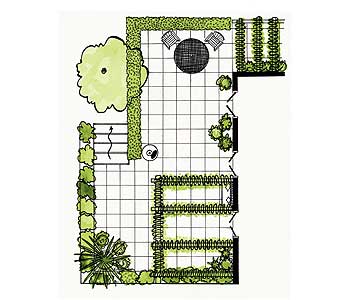Garden Plan 2011

From early spring till fall’s first frost, vegetable gardens can yield not only delicious crops but exercise and life skills as well. But, to get to the point of picking fresh produce you grew yourself you must first start – with a garden plan. Winter is the perfect time to sit and dream and plan out what your garden will look like long after the cold weather disappears.
To begin with, decide what types of vegetables you want to plant and make a list. Then measure all the areas you have available that can be planted. Think about flowerbeds or parkways that could help you expand your available planting area. Not all vegetables need to grow in a set aside garden area. In fact, I normally grow some vine crops like melons, squash and pumpkins in flowerbeds, and every fence is a potential trellis for peas and beans and other vine crops, saving the “garden” for root crops, tomatoes and salad greens.
Once you have measurements for the areas that can be planted, plot them out on graph paper and get ready to “lay out” your garden. Using the growing space requirements for each crop, measure and build your graph paper garden. This will help you see if modifications need to be made because of space challenges.
My garden will be smaller this year because Brianne wanted a larger exercise area for her lambs (a sacrifice I was willing to make since this is her last year to show). What won’t change though is the geometry I use to maximize production. The 17’ x 14’ main garden area will have a center pathway of two feet. Each row of vegetables will be 2-feet wide with a one foot wide path between them for easy weeding, hoeing and harvesting. To help control the weeds and retain moisture, each row will be mulched with a layer of chipped wood, given away for free from our local library.
At the far end of each row, a variety of tomatoes will be planted for fresh, slicing, canning and sauce. Larger vegetables like cauliflower, broccoli and cabbage will be interplanted with smaller, faster growing root vegetables and greens that become harvestable long before the larger vegetables grow big enough to shade them out. On the pathway end of each row I’ll plant marigolds and herbs to help ward off insects. Non-traditional garden areas will be amended with composted rabbit, chicken and sheep manure to improve the soil quality and give the transplants a good start. Once planted, these garden areas will also be mulched to keep down the weeds.
While I spend my evenings “fine tuning” my garden plan, daylight hours are for starting seeds. Vegetables like broccoli, cabbage, cauliflower, cucumbers and tomatoes like to be started indoors weeks before they are ready to “plant out” in the garden. I use a homemade seed soil mix of well-rotted compost, good soil, peat moss and sand. Pony packs, 4-inch pots, clay pots and other containers are collected year-round from family and friends. They have to be sterilized though to help prevent the potential spread of disease. I do this by mixing one teaspoon of bleach to every one gallon of water in a five gallon bucket, then rinsing each container well with clean water.
Spring is still weeks away, but so far this season we’re off to a good start. Our mild weather and decent rain has made life easy for early season cool weather vegetables. And, if things keep up we’ll have a garden bursting with vegetables full of color and flavor by the beginning of summer.
So, folks, how are your garden plans coming???
![]() photo credit: Garden and Beyond
photo credit: Garden and Beyond
Recent comments
Aenean nonummy hendrerit mauris. Phasellus porta.